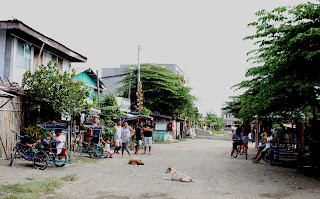Photographs by Melissa Chia &
Sarah Chong
Like thieves in the night, the travelers had packed up to leave the
University of Philippines Visayas, our home for the past ten days. We hugged
our student guides, who had woken up at 4am despite not really having to do so,
exchanged promises to see each other soon and to keep in touch. Despite my protesting
eyelids, I kept myself awake to absorb just once again all the places we’ve
been to over the past ten days. As we passed the Esplanade, Smallville, SM City
Iloilo, and moved on to the road to the airport, I felt a horrid sinking feeling
in my stomach, almost as if I was leaving my real home to go away.








































